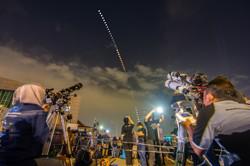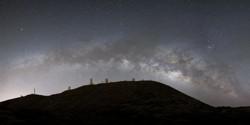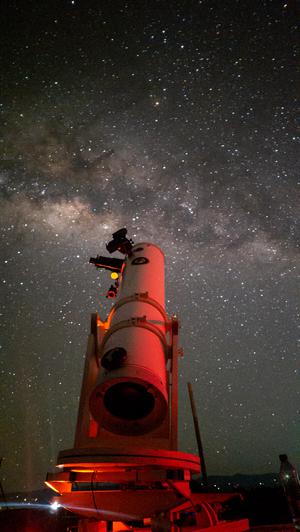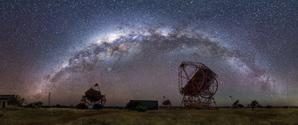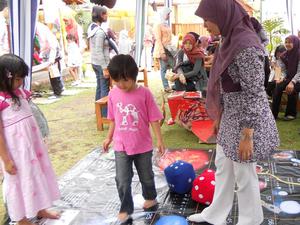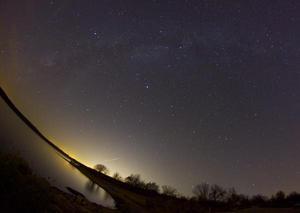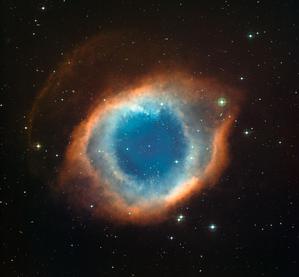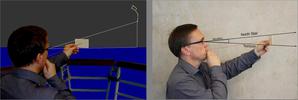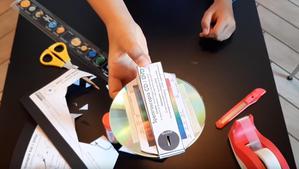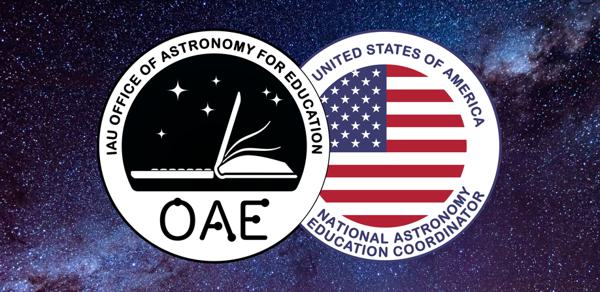Glossary term: 天文學
Description: 天文學是一門古老的科學,它研究天空中的天體,如恆星、行星、星系、流星和隕石。它還研究大氣層,以便將地球與鄰近行星進行比較。過去,天文學關注的是追蹤太陽、月亮和行星的位置,以用於日曆和導航。現在,現代天文學家還研究支配天體形成和行為的物理現象。
在古代,天文學往往與偽科學占星術密切相關,許多人至今仍不知道這兩者之間的區別。
天文學是少數幾門業餘愛好者可以發揮重要作用的科學之一,因為業餘天文愛好者為許多重要發現做出了貢獻。
Related Terms:
See this term in other languages
Term and definition status: The original definition of this term in English have been approved by a research astronomer and a teacher The translation of this term and its definition is still awaiting approval
This is an automated transliteration of the simplified Chinese translation of this term
The OAE Multilingual Glossary is a project of the IAU Office of Astronomy for Education (OAE) in collaboration with the IAU Office of Astronomy Outreach (OAO). The terms and definitions were chosen, written and reviewed by a collective effort from the OAE, the OAE Centers and Nodes, the OAE National Astronomy Education Coordinators (NAECs) and other volunteers. You can find a full list of credits here. All glossary terms and their definitions are released under a Creative Commons CC BY-4.0 license and should be credited to "IAU OAE".
If you notice a factual or translation error in this glossary term or definition then please get in touch.
Related Media
我們之間的日食,作者穆罕默德·雷漢,印度尼西亞
Credit: 穆罕默德·雷漢/國際天文學聯合會教育辦公室
License: CC-BY-4.0 Creative Commons 姓名標示 4.0 國際 (CC BY 4.0) icons
智利天文臺總部,斯洛伐克羅伯特-巴爾薩報道
Credit: Robert Barsa/IAU OAE
License: CC-BY-4.0 Creative Commons 姓名標示 4.0 國際 (CC BY 4.0) icons
Teide Observatory
License: CC-BY-4.0 Creative Commons 姓名標示 4.0 國際 (CC BY 4.0) icons
了解夜空
Credit: Juan Pablo Botero Londoño/IAU OAE (CC BY 4.0)
License: CC-BY-4.0 Creative Commons 姓名標示 4.0 國際 (CC BY 4.0) icons
橫亙 H.E.S.S 天文臺上空的銀河
Credit: Jianfeng Dai/IAU OAE (CC BY 4.0)
License: CC-BY-4.0 Creative Commons 姓名標示 4.0 國際 (CC BY 4.0) icons
Related Activities
Snakes & Ladders Game
astroEDU educational activity (links to astroEDU website) Description: Learn astronomical topics through the classic snakes and ladders game.
License: CC-BY-4.0 Creative Commons 姓名標示 4.0 國際 (CC BY 4.0) icons
Tags:
Game
, snakes and Ladders
Age Ranges:
6-8
, 8-10
, 10-12
, 12-14
, 14-16
Education Level:
Middle School
, Primary
, Secondary
Areas of Learning:
Game-mediated learning
Costs:
Medium Cost
Group Size:
Group
Skills:
Asking questions
, Communicating information
AstroPoetry Writing
astroEDU educational activity (links to astroEDU website) Description: An activity combining English and science to encourage students to think about the night sky to help them write a poem related to astronomy.
License: CC-BY-4.0 Creative Commons 姓名標示 4.0 國際 (CC BY 4.0) icons
Tags:
Art
, Creativity
, Star-gazing
, Poetry
Age Ranges:
6-8
, 8-10
, 10-12
, 12-14
Education Level:
Middle School
, Primary
, Secondary
Areas of Learning:
Fine Art focussed
, Observation based
Costs:
Low Cost
Duration:
1 hour 30 mins
Group Size:
Individual
Skills:
Communicating information
Create Your Own Astro-Music
astroEDU educational activity (links to astroEDU website) Description: Create your own music inspired by images of space.
License: CC-BY-4.0 Creative Commons 姓名標示 4.0 國際 (CC BY 4.0) icons
Tags:
Art
, Creativity
, Music
Age Ranges:
8-10
, 10-12
, 12-14
, 14-16
, 16-19
Education Level:
Informal
, Middle School
, Primary
, Secondary
Areas of Learning:
Fine Art focussed
Costs:
Low Cost
Duration:
1 hour
Group Size:
Group
Skills:
Communicating information
Navigating with the Kamal – Northern Hemisphere
astroEDU educational activity (links to astroEDU website) Description: How did Arabian sailors navigate at sea?
License: CC-BY-4.0 Creative Commons 姓名標示 4.0 國際 (CC BY 4.0) icons
Tags:
History
, Geography
, Coordinates
, Celestial navigation
, Arabia
, Kamal
Age Ranges:
14-16
, 16-19
Education Level:
Middle School
, Secondary
Areas of Learning:
Modelling
, Social Research
Costs:
Low Cost
Duration:
1 hour 30 mins
Group Size:
Group
Skills:
Analysing and interpreting data
, Asking questions
, Communicating information
, Developing and using models
, Planning and carrying out investigations
Hunting for spectra
astroEDU educational activity (links to astroEDU website) Description: Learn about light and spectra building a spectroscope with a CD!
License: CC-BY-4.0 Creative Commons 姓名標示 4.0 國際 (CC BY 4.0) icons
Tags:
Hands-on
, Experiment
, prism
Age Ranges:
8-10
, 10-12
, 12-14
, 14-16
, 16-19
Education Level:
Informal
, Middle School
, Primary
, Secondary
Areas of Learning:
Guided-discovery learning
Costs:
Low Cost
Duration:
1 hour
Group Size:
Individual
Skills:
Asking questions
, Constructing explanations
, Planning and carrying out investigations
